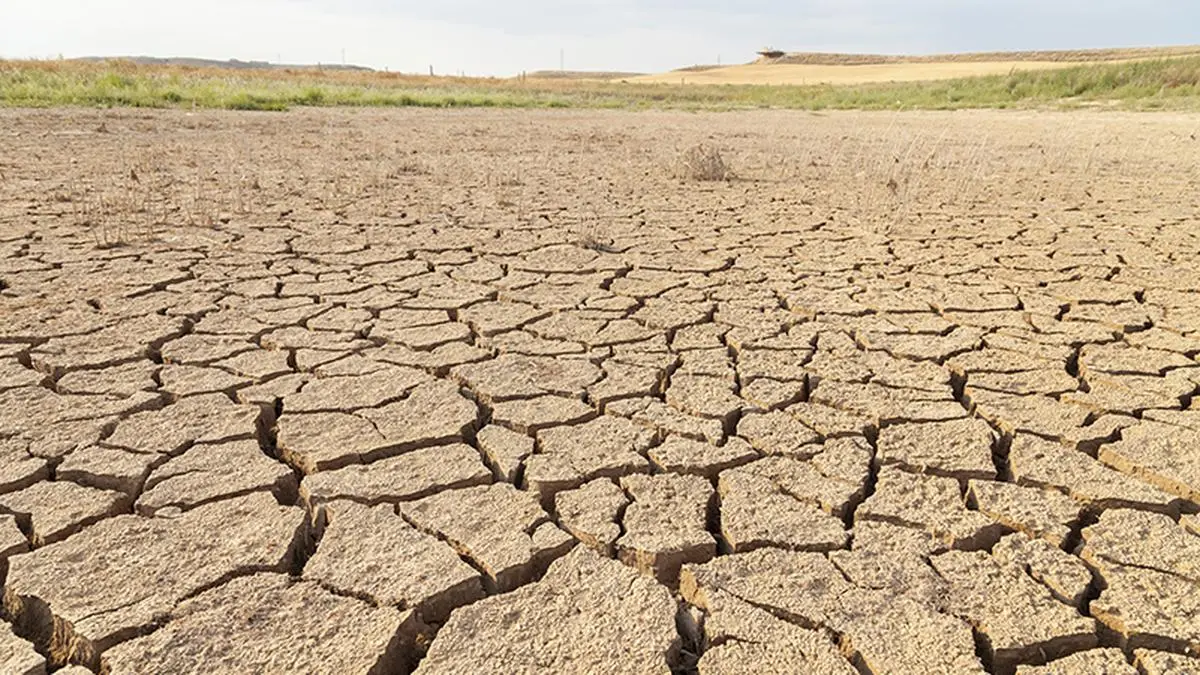By Srikrishnan Pc
Copyright thehindubusinessline

The water cycle has become more erratic and intense, swinging between floods and droughts, according to a report from the World Meteorological Organization (WMO). It highlights the cascading effects of too much or too little water on both economies and societies.
The State of Global Water Resources report says only about one-third of global river basins had normal water levels in 2024. The rest were either higher or lower than usual — marking the sixth straight year of widespread imbalance.
Melting glaciers
2024 was the third consecutive year with significant glacier loss across all regions. Many small-glacier regions have already hit or are nearing the so-called peak water point when a glacier’s melting reaches its highest annual runoff, before declining as the glacier shrinks further.
The Amazon Basin and other parts of South America, along with southern Africa were hit by severe drought in 2024, while central, western and eastern Africa, parts of Asia and Central Europe experienced wetter-than usual conditions, it says.
“Water sustains our societies, powers our economies and anchors our ecosystems. And yet the world’s water resources are under growing pressure and – at the same time – more extreme water-related hazards are having an increasing impact on lives and livelihoods,” said WMO Secretary-General Celeste Saulo.
“Continued investment and enhanced collaboration in data sharing are vital to close monitoring gaps. Without data, we risk flying blind,” she said.
An estimated 3.6 billion people face limited access to water for at least a month per year and this is projected to rise to over 5 billion by 2050, according to UN Water, with the world falling well short of Sustainable Development Goal 6 on water and sanitation.
Climate extremes
The year 2024 was the hottest on record and began with an El Niño event that affected major river basins. It fuelled droughts in northern South America, the Amazon Basin and southern Africa.
It was wetter than average in Central and western Africa, the Lake Victoria basin in Africa, Kazakhstan and Southern Russia, Central Europe, Pakistan and Northern India, Southern Iran and north-eastern China
Hydro imbalance
In the past six years, only about one-third of the global river catchments had normal discharge levels compared to the 1991-2020 average. This means two-thirds experienced either excess or insufficient water – highlighting the growing instability of the hydrological cycle.
There was much below-normal discharge across major river basins including the Amazon, São Francisco, Paraná, and Orinoco in South America, and the Zambezi, Limpopo, Okavango, Orange basins in southern Africa.
Widespread flooding occurred in West African basins in Senegal, Niger, Lake Chad, Volta. Above-normal river discharge was observed across Central Europe and parts of Asia, swelling major basins including the Danube, Ganges, Godavari and Indus.
Nearly all of the 75 major lakes across the globe saw above or much above normal temperatures in July, impacting water quality.
Trends in reservoir inflows, groundwater, soil moisture and evapotranspiration revealed regional contrasts, with recharge in wetter regions such as parts of Europe and India, while persistent deficits affected parts of Africa, the Americas and Australia.
Over-extraction of groundwater remained a serious issue in some areas, reducing future water availability for communities and ecosystems and increasing pressure on global water resources. Only 38 per cent of the wells (out of 37 406 from 47 countries that submitted groundwater data) had normal levels — the rest had either excess or insufficient water.
Melting peaks
2024 marked the third consecutive year with widespread ice loss across all glaciated regions: 450 gigatonnes (gt) lost – the equivalent of a massive ice block 7 km tall, 7 km wide, and 7 km deep, or enough water to fill 180 million Olympic swimming pools. This meltwater added around 1.2 millimetres to global sea levels in a single year, raising the flood risk in coastal areas.
Record ice loss occurred in Scandinavia, Svalbard and North Asia, while regions like the Canadian Arctic and Greenland periphery experienced more moderate losses. Closer to the Tropics, Colombian glaciers shrank by 5 per cent in 2024.
Extreme events
Africa’s tropical zone experienced unusually heavy rainfall in 2024 compared to historical norms, causing about 2,500 deaths and displacing 4 million people. Europe faced its worst flooding since 2013, with one-third of the river networks exceeding high flood thresholds.
Asia and the Pacific were hit by record-breaking rainfall and tropical cyclones, leading to over 1,000 fatalities. Brazil faced simultaneous extremes, with catastrophic flooding in the south claiming 183 lives, while the continuing 2023 drought in the Amazon basin affected 59 per cent of the country’s land area.
“Reliable, science-based information is more important than ever before because we cannot manage what we do not measure. The WMO’s State of Global Water Resources Report 2024 is part of WMO’s commitment to provide that knowledge,” said WMO Secretary-General Celeste Saulo.
Published on September 18, 2025



